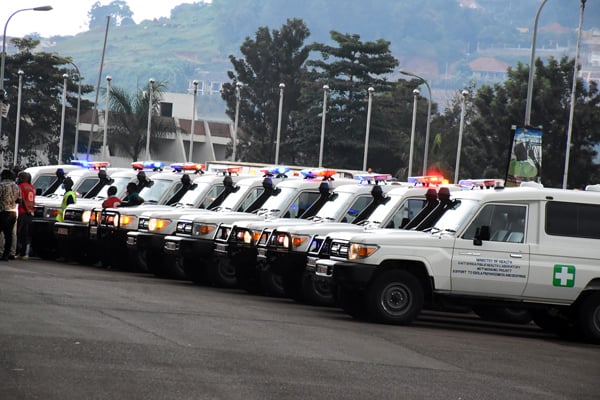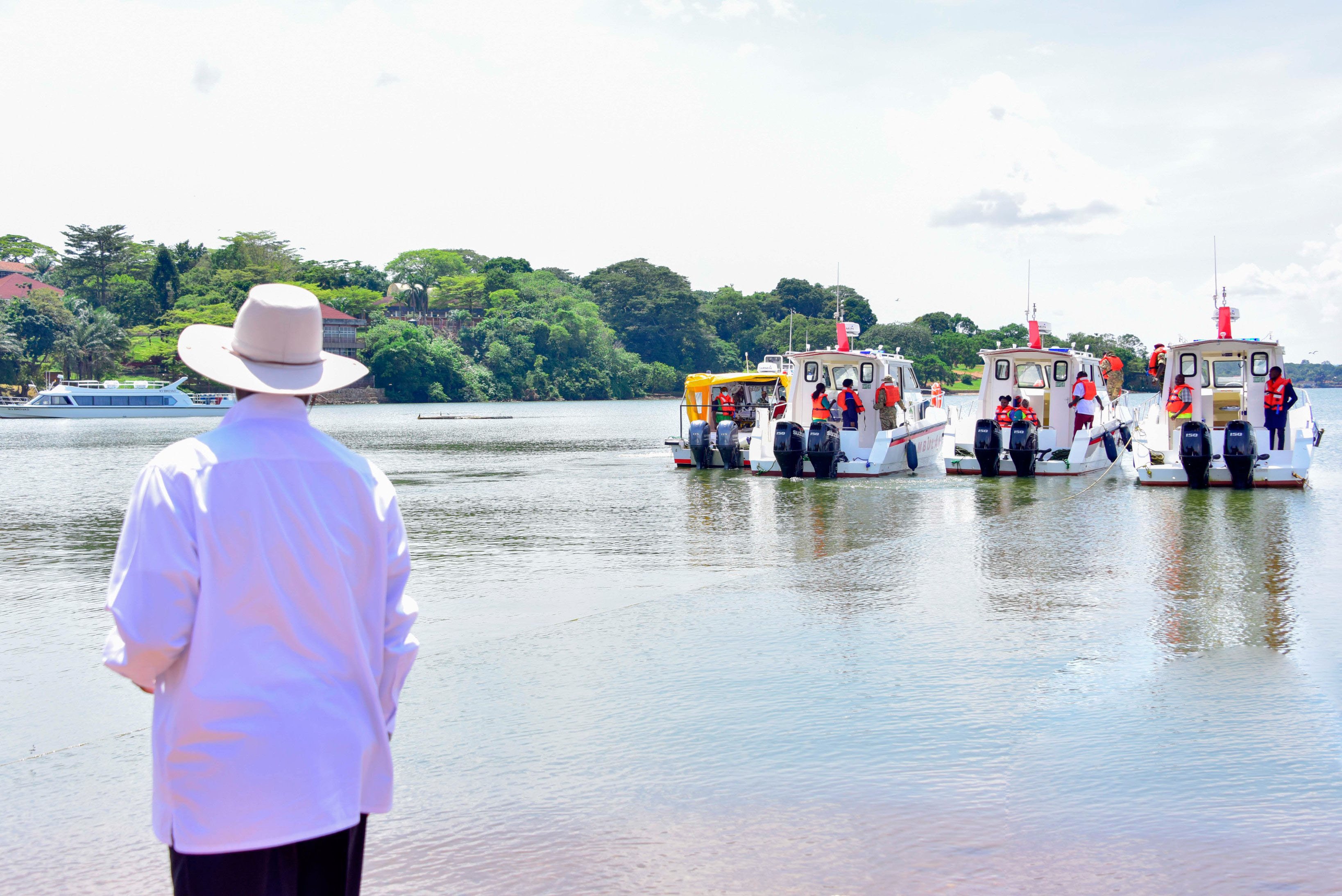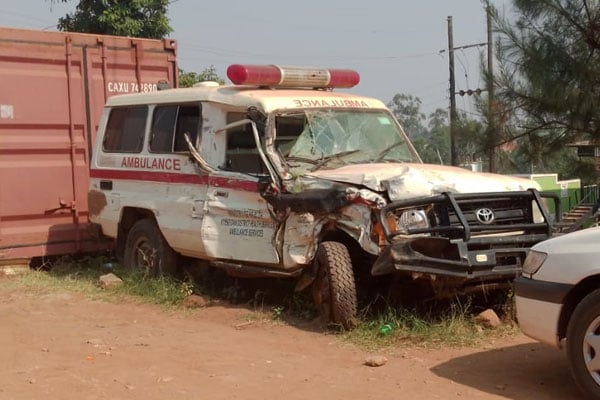First responder keen to address apathy on roads

Some of the ambulances that the government procured as part of efforts to fight the spread of Covid-19 parked at Mandela stadium in Wakiso District in September in 2020. PHOTO / FILE
What you need to know:
- To address this widespread apathy in the capital, Okech proposes that responsible authorities “put up clear pathways where ambulances can pass when they are going for such emergencies.”
The Tuesday evening traffic was snaking its way out of Kampala along the city’s Queen’s Way Road when a fire truck siren went off. Alice Sebuliba, 55, a teacher riding in one of the minibus taxis was suddenly agitated, protesting the noise.
“They are likely ferrying water for personal use at their homes,” she remarked as neither the taxi driver nor the others on the road yielded way, forcing the fire truck to divert towards another lane in Katwe.
Under Uganda’s Traffic and Road Safety Act, 1998, emergency services such as fire trucks and ambulances have a right of way. Most road users though, are quick to dismiss them, much to the worry of Derrick Okech— a Red Cross medic, who leads emergency medical teams in eastern Uganda, the most deadly road corridor in the country.
“Road users should respect ambulances. It’s really key in our response time and it is one of our biggest challenges,” Okech said in an interview at the humanitarian agency’s headquarters in Kampala on October 2.
Uganda’s capital is particularly problematic, and Okech stresses this by referencing “a case where an ambulance was dispatched from Kampala for Kayunga and another from Jinja to the same place yet the one from Jinja arrived in time but the Kampala team failed to make it in time because of traffic jam.”
Lack of interest
To address this widespread apathy in the capital, Okech proposes that responsible authorities “put up clear pathways where ambulances can pass when they are going for such emergencies.”
Okech lost a brother as a teenager in a road accident at Banda on the Kampala-Jinja highway, where they were raised. Now in his early 30s, Okech reckons his sibling could have been saved had there been a system such as the one he is now helping sustain. In fact, he revealed that the enduring trauma of that loss is what inspired him into this line of work.
“My brother didn’t die immediately,” Okech grimly recalls. “He first struggled with life, but there was no help coming. As my mother was arriving at the hospital moreover on a boda boda, he breathed his last.”
Since 2019, the Ministry of Health has allocated as many as 25 ambulances in different regions dedicated to responding to scenes of road traffic accidents. The fleet under management of Red Cross forms a nascent effort at streamlining emergency medical response services in a country long accustomed to ferrying victims and survivors of road traffic accidents on police pick-up trucks and boda bodas.
And so far, there are positive testimonies.
Light at end of tunnel
Months ago, a seven-year old girl was knocked by a speeding army pic-kup at Nakalama, Iganga District. She had been declared dead before Okech’s team arrived at the scene from Jinja. Cardiopulmonary resuscitation—commonly referred to as CPR— was administered, and it turned out successful. Severe head injuries and blunt chest trauma had sent the girl into cardiac arrest.
“My daughter Rachel is now well. I had lost hope that she would ever walk again, but she now walks. She can even run while I never expected her to even stand,” the mother, Margaret, said by phone from Nakalama on October 10, adding, “Even sitting when helped, she couldn’t. I thank God for the medical team that rescued her.”
According to the World Health Organisation, road traffic accidents account for as much as seven percent of all deaths registered in Uganda annually.
The ambulance service has registered a 98 percent recovery rate of patients they reach at accident scenes, internal tracking data shows. The emergency medical teams, now mastering their game, have started to attain average response time slightly above 10 minutes, internal tracking data shared by Red Cross shows. This compares with a standard target of an hour within which to respond to accident scenes.
In towns along Uganda’s highways, armies of volunteers are heeding the call to these emergency duties. The first responders are often boda boda riders and taxi touts, as well as police traffic officers, who then relay verified information to the ambulance dispatchers.
Yet concerns linger.
Determination
People are still not aware of this public service and those who know succumb to the false belief that there are no free things in Uganda. The net result is a hesitation to call the toll free numbers.
It’s disturbing for Yorokamu Hebert Bwita, a dispatch coordinator, that some of the ambulances out there in the field register as low as 11 responses in a month yet there are many accidents happening across the country. Bwita attributes the phenomenon to lack of awareness.
But this has not impacted his morale and that of other colleagues. To the contrary, they seem fired-up. At the agency’s call and dispatch centre, young men and women remain on standby ready to receive accident reports on the several landlines lining the place. The GPS tracking system for the ambulances conspicuously displays the location of every ambulance across the country on a large screen, all on standby for emergency dispatch.
Okech, acutely aware of the importance of such meticulousness, does not hesitate to qualify it all.
“Death usually [occurs] from the time the accident happens to the time a patient is handed over to the medical facility,” he reasons, adding, “If you respond well, definitely you are able to save more lives.”




